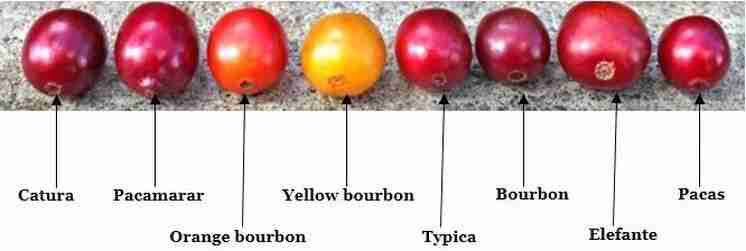How does coffee grow?
By: Emily L.
Ever wonder about the journey your coffee makes before it makes its way to your door or to your local Klatch? Ever wonder where coffee comes from, or what someone means when they talk about the coffee cherry?
Blackberries grow on small shrubs, cherries grow on trees—what about coffee cherries? If you visited a coffee farm, what would it look like? A coffee tree, pictured below, can be as small as a small shrub or as large as a medium sized tree, up to 8 meters tall.


photos courtesy of Tree Pictures; Smithsonian Libraries
If you talked to a botanist, they might share more about the technicality of coffee, or coffea.
The Origin of Coffee: Species, Varieties and Cultivars
Breaking it down more, coffee is made up primarily of the species arabica, and within that, there are varieties and cultivars. Bourbon and Typica are two of the more well known cultivars, or cultivated varieties. The Specialty Coffee Association has a helpful diagram.


As pictured above, each coffee cherry looks different. You might also recognize varieties geisha, mokka, pacamara, bourbon, and catuai. Each variety/varietal is going to have different characteristics and be found and/or grown in different regions. For example, the rare mokka is currently only grown in Panama.
All About That Environment
This brings us to the environment that coffee is grown in, or the terroir. Each coffee varietal has environmental factors that are ideal for growth. The three main factors to consider are soil, climate, and elevation or altitude.
As an example, let’s consider our farming partner in Panama, The Lamastus Family’s Elida Estate. The micro-ecosystems of Panama produce some of the best Geishas and our award-winning Panama Elida Natural Catuai.
There are several local ecological conditions that set this coffee apart from others. First, the farm is located at a very high elevation (1600-1800 meters for this varietal), one of the two highest coffee farms in Panama. The Catuai is grown in rich, volcanic soil with a cool climate and a significant amount of fog and mist during the dry season.
The coffee trees are surrounded by rainforest—the estate is located in the Volcan Baru National Park, a protected ecological reserve and sanctuary. Because of the cool temperatures at night, it takes 2 to 3 years longer than the average coffee tree before these trees begin to produce cherries. The low temperatures also contribute to an extended ripening time by 1 month, creating a more developed coffee bean.
All of these factors influence the nuances found within each coffee bean, which impact flavor. So, if you go to read a Klatch coffee description and see that it’s a geisha or a catuai, you’ll know a bit more about what to expect.



